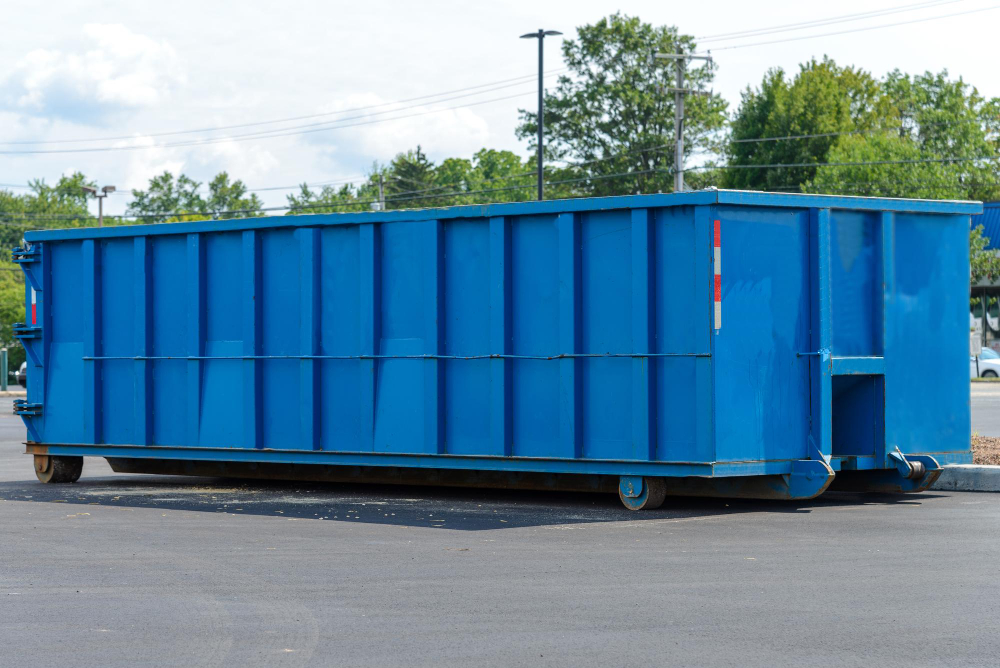


Selecting the right roll off container size can make or break your project timeline and budget. Whether you're tackling a home renovation, managing a construction site, or clearing out years of accumulated items, understanding container capacities helps you avoid costly mistakes and unnecessary delays.
Roll off containers come in standard sizes, but their actual capacity depends on several factors beyond just dimensions. This guide breaks down everything you need to know about roll off container sizes, helping you choose the perfect fit for your Orlando project.
The smallest option in most fleets, 10-yard containers measure approximately 12 feet long, 8 feet wide, and 3.5 feet high. These compact units hold about 10 cubic yards of material, equivalent to roughly three pickup truck loads.
Best for:
Weight limit: Typically 2-3 tons, though this varies by company and debris type.
Mid-sized containers measuring around 22 feet long, 8 feet wide, and 4 feet high offer double the capacity of 10-yard units. These popular choices accommodate approximately six pickup truck loads of debris.
Best for:
Weight limit: Usually 3-4 tons, making them suitable for heavier materials like concrete or tile.
These larger containers span roughly 22 feet in length, 8 feet in width, and 6 feet in height. With space for about nine pickup truck loads, they handle substantial projects without requiring multiple containers.
Best for:
Weight limit: Typically 4-5 tons, accommodating both bulky and heavy materials.
The largest standard size measures approximately 22 feet long, 8 feet wide, and 8 feet high. These massive containers hold roughly 12 pickup truck loads of material, making them ideal for the biggest projects.
Best for:
Weight limit: Generally 5-6 tons, though restrictions may apply for extremely heavy materials.
Different materials take up varying amounts of space and weight. Lightweight items like furniture or cardboard can fill a container's volume before reaching weight limits. Dense materials like concrete or dirt often max out weight restrictions while leaving space unused.
Oddly shaped items create air pockets that reduce effective capacity. Furniture, appliances, and irregular construction materials often don't pack efficiently, meaning you'll need more space than calculations suggest.
How you load the container significantly impacts capacity. Strategic placement of items, breaking down large pieces, and filling gaps with smaller debris maximizes space utilization.
Start by evaluating what you're disposing of. Make a list of materials, estimate quantities, and consider both volume and weight. Remember that it's often better to choose a slightly larger container than to risk overflowing or exceeding weight limits.
Orlando has specific regulations regarding roll off container placement, permits, and acceptable materials. Some neighborhoods have restrictions on container sizes or placement duration that might influence your choice.
Longer projects might benefit from larger containers to avoid frequent pickups. However, if space is limited or you're working in phases, multiple smaller containers might prove more practical.
Smaller containers typically cost less upfront, but the price per cubic yard often favors larger sizes. Calculate the cost per cubic yard to determine the most economical option for your project volume.
Weight overages, extended rental periods, and permit requirements can significantly impact total costs. Factor these potential expenses into your size selection to avoid budget surprises.
Choosing the right size the first time prevents the need for additional containers, saving both money and time. Undersized containers often lead to project delays and additional rental fees.
Many people underestimate how much debris their project will generate. Demolition projects, in particular, create more waste than anticipated. When in doubt, size up rather than risk project delays.
Focusing only on volume while ignoring weight limits leads to overage fees and potential pickup refusals. Dense materials like concrete, dirt, or brick require special consideration regardless of container size.
Ensure your chosen container size fits your space constraints. Consider delivery truck access, overhead clearances, and local regulations that might restrict placement options.
Orlando's hurricane season can affect project timelines and debris removal schedules. Plan accordingly and discuss weather-related policies with your roll off container rental provider.
Peak construction and renovation seasons may limit container availability in certain sizes. Book early during busy periods to secure your preferred container size.
Orlando's humidity and frequent rain can affect certain materials' weight and disposal requirements. Discuss weather protection options if your project spans multiple days.
Load heavy items first, fill gaps with smaller debris, and break down large items when possible. Proper loading techniques can increase effective capacity by 20-30%.
Some materials have different disposal requirements or fees. Separating recyclables, hazardous materials, and regular debris can help optimize container usage and reduce costs.
Coordinate your container delivery with peak debris generation periods. Having the container arrive too early or too late can impact project efficiency and rental costs.
Selecting the right roll off container size requires balancing project needs, budget constraints, and practical considerations. Start with a realistic assessment of your debris volume and weight, then factor in efficiency considerations and local requirements.
Remember that professional guidance can save both time and money. Experienced rental companies understand local regulations, seasonal factors, and project-specific requirements that influence container selection.
If you need roll off container rental in Orlando, FL, contact Tip Top Containers today to request a quote. Our experienced team can help you select the perfect container size for your project, ensuring efficient debris removal without breaking your budget.